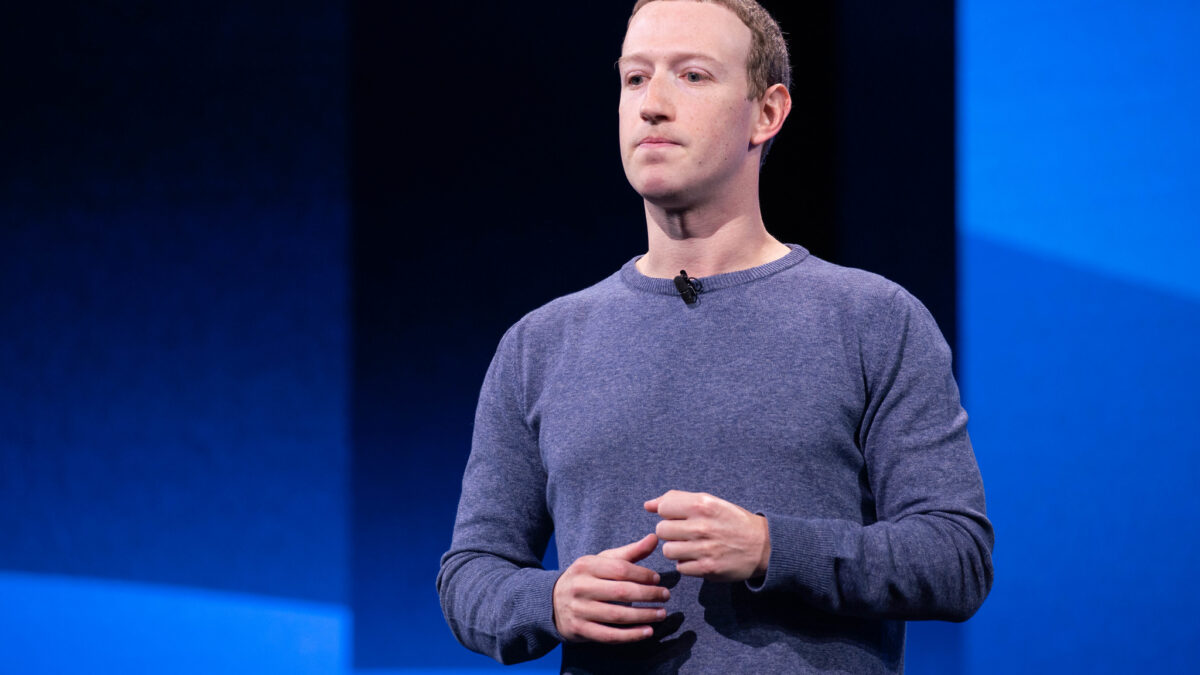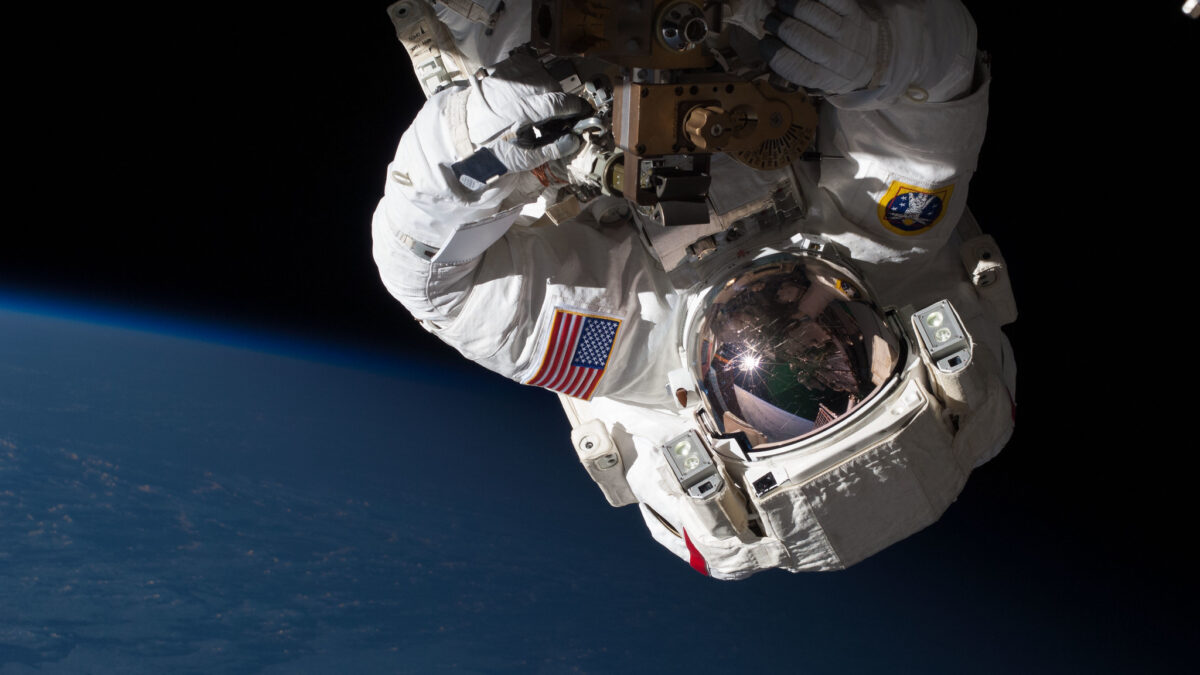
You know how the story goes. Boy meets girl. Boy and girl fall in love and get engaged. They freeze some embryos to implant in a surrogate and carry to term. Boy and girl break up and now those embryos are sitting frozen, per the contract they signed while engaged, barring some drastic change. Boy longs for children and wants the embryos to live, while girl wants to leave them frozen.
Maybe that’s not how the story normally goes, at least not publicly. When the boy is a successful businessman with a past and possibly a future in politics and the girl is a Hollywood star, we all get to see the fight. It started when the boy, Nick Loeb, wrote an op-ed for The New York Times explaining why he wants the courts to compel the girl, Sofia Vergara, to allow him to bring the embryos to term. In response, Vergara explained why she wants the embryos to remain frozen.
Speaking to Howard Stern, Vergara explained, “More than a mother, it needs a loving relationship. Parents that get along, that don’t hate each other.”
The Logical Case Against Loeb
On that point, Vergara isn’t wholly wrong; Loeb is going for the reverse-Perry. He wants to leave mom out of it and handle all the duties himself. As he is financially stable, he likely has the means to do so. Financial stability doesn’t necessarily correlate with success later in life, though. Kids who enjoy a two-parent household are “strongly associated with more education, work, and income.” So Vergara’s argument, that both parents matter, isn’t something she just invented out of the cloth.
But it’s not just about two parents and the material value they provide to kids. There’s also this thing called the Internet and, in the age of the Internet, everything lives forever. Sure, the kids won’t immediately know their story, the battle that preceded their arrival should Loeb prevail, but when they grow up they most certainly will. And, unlike with adoption, they’ll know that Mom didn’t want them to ever see the sunshine. That’s why Loeb initially used pseudonyms. With the pseudonyms gone and the fight now public, such obfuscation is now impossible. North West’s Internet search discoveries regarding her famous mother would make the Loeb daughters (both embryos are female) jealous.
This is assuming that they make it to term. The failure rate for frozen embryos in 30-year-old women is 77 percent; it jumps to 90 percent for women who are 40.
Which means there isn’t a strong logical case for Loeb. The girls face a future with fewer economic benefits than they would if he and Vergara were married. They are also certain to one day discover their biological mother didn’t want them, assuming they make it to term and are born. Really, then, this is just about Loeb’s selfishness.
Loeb Can Still Father Children with a Different Woman
As he wrote in his article, the odds of Loeb prevailing over Vergara aren’t favorable. Of the 10 similar cases his lawyers have identified, eight of the parents who wanted custody of the frozen embryos lost. The two cases in which custody was awarded are drastically different situations than that of Loeb and Vergara—the mothers had undergone chemotherapy and were infertile, as a result. For those women, those embryos were their last shot at parenthood.
As Joanna Rothkopf rather colorfully pointed out at Salon, Loeb isn’t infertile and can father children with another woman, hence he cannot make the one argument that actually gets traction. Even Loeb conceded his plans to seek a wife and father other children in the course of his explanation for why he took legal action against Vergara in the first place.
In light of all these options available to Loeb to fulfill his dream of fatherhood, there’s just no logical reason for him to even fight this. Maybe there’s one. Maybe the fact that life begins at conception is fueling him. Personally, if I found myself in a similar situation, I’d likely go the same route. It also highlights why in vitro fertilization (IVF) is fraught with ethical questions that should give those of us who aren’t biology deniers pause.
Before we proceed, I know people who have used IVF to create children they love and are tenderly raising. They did so after suffering loss and going for the last option available to them. That scientific advances allowed those couples to become biological parents is a fantastic thing; it was also the only thing that allowed them to become parents. For them, it was not about convenience. For Vergara, the picture is muddier.
IVF as a Matter of Convenience
We cannot divine Vergara’s reasons for choosing IVF and surrogacy, but at no point is there any mention of miscarriage or infertility for her. (Loeb does mention that he and his ex-wife unsuccessfully attempted to conceive using fertility treatments. He does not mention the source of infertility.)
Maybe I’m too cynical. Maybe I’m swayed by Loeb’s “not so subtle digs at [Vergara’s] apparent distaste for reproduction.” As a Sofia Vergara fan it pains me to say this, but in either case it does seem that her career was the reason she insisted on IVF and surrogacy. But this isn’t about career choices; it’s about treating procreation as something to deal with using lab science and embryo contracts instead of love-making and marriage. When you circumvent nature, there will be consequences.
The Embryo Glut
One such consequence is that fertility clinics are currently facing an “embryo glut” thanks to advances in the efficiency of treatments.
In 2002, the Society for Assisted Reproductive Technology—the research arm for U.S. fertility doctors—decided to find out how many unused embryos had accumulated in the nation’s 430 fertility clinics. The RAND consulting group, hired to do a head count, concluded that 400,000 frozen embryos existed—a staggering number, twice as large as previous estimates. Given that hundreds of thousands of IVF treatment rounds have since been performed, it seems fair to estimate that by now the number of embryos in limbo in the United States alone is closer to half a million.
As detailed in the Mother Jones article containing the above quote, many of these embryos were not created because of career choices. They were created because of infertility and, as such, more embryos than necessary were formed. Given the failure rate, they plan for the worst in order to beat the odds. This helps couples become parents. It also causes them to face difficult questions and decisions when they have to decide what to do with the viable embryos sitting on ice. As one mother said:
‘I was like, “I created these things, I feel a sense of responsibility for them,” is how one IVF patient put it. Describing herself as staunchly pro-choice, this patient found that she could not rest until she located a person—actually, two people—willing to bring her excess embryos to term.
Parents bonding with frozen potential, scrambling to figure out what to do with those they cannot bring to term. Questions about life—when it truly begins, what to do when scientific output outstrips demand, what to do with the embryos for which there is no waiting womb—are greatly complicated and transcend the ideological and political realms. There’s also the matter of creating a false image of just how easy it is to become a parent when biology or our schedules don’t play nice.
What IVF Really Involves
There’s a discussion we often skip in polite company, another consequence of delayed childbearing, but fertility is a really a young woman’s game. When women wait to have kids, it gets much more difficult. That’s not to say it’s impossible: my wife bore our last at 38 and we had just looked at one another nine months prior, but we’re not the norm.
Despite genetic testing, IVF still has significant limitations. ‘A woman in her 40s has a less than 5 percent pregnancy rate per treatment cycle,’ says Ringler, while a woman in her early 30s has up to a 70 percent rate. One proven way to conquer fertility decline from aging eggs is using a donor egg. (A woman’s eggs start to decline in fertility in the late 20s. ‘At 40, most women drop off the cliff,’ says Steinberg.) ‘For a woman in her mid-40s who uses a donor egg, her pregnancy rate jumps up to 75 percent per treatment cycle,’ says Ringler, who thinks donor eggs are the best option for ‘all women 44 and older, an age when 95 percent of eggs are chromosomally abnormal.’ Adds Steinberg, ‘Nature won’t let abnormal embryos make babies.’
Egg donation, however, is a largely unregulated industry. Says the owner of an entertainment PR firm that reps top actors and musicians who experienced secondary infertility at age 41, ‘Nothing’s done to say the donor’s fertile, sane or healthy.’ After spending $2,500 on tests for a donor who proved to have low fertility, the publicist and her husband chose a second donor who produced eight eggs: ‘She looked like me, had a great GPA and was athletic.’ Two embryos were transferred, and she had twin girls at 44.
Most donor eggs come from women in their 20s, paid $5,000 to $10,000 to undergo egg retrieval. ‘Bloating was the biggest downside,’ says an egg donor named Sara, who first donated eggs in 2007 when she was a 22-year-old acting student. (Sperm donors are paid $75 to $150 a go for a vial of sperm that might sell for $700 or more.) Regardless of the number of eggs produced, they all belong to the intended parents. Sara knew nothing about her client except that he wanted an Italian baby and she’s Italian. ‘You don’t sign up to be part of someone’s family,’ she says. ‘You do it because it is selfless and you are strong enough to deal with the idea afterward.’
Donor eggs and surrogacy offer up an entirely different ethical conundrum in and of themselves, but they also bring us back to the previous problem—embryo glut.
Life in a Permanent Chrysalis
Having kids is an entirely illogical proposition to begin with. Yet we do. We long to create a new generation. For some of us, it’s a challenge, and we’re thankful that scientific advancement offers hope. For others, it’s a challenge, but not because of biology, but because of our desires. Scientific advance offers an alternative in both cases.
In either case, life ripples out and transcends our little platoon. Whether it’s those who help along the way or the life that remains in stasis, perhaps until they’re no longer capable of even attempting the journey to term. We talk about it in the abstract, but it’s telling that even the Mother Jones titled its article on the subject “Souls on Ice.”
That is precisely what they are, and that brings us back to Loeb and Vergara, a microcosm of the larger ethical discussion surrounding IVF. In them, we find that half of the previously complementary duo is content to leave the embryos in limbo. The other half wants to give those embryos, those daughters, a chance.
Regardless of the logical arguments against giving those daughters that chance, they deserve it, because life is an illogical and wonderful irruption. And maybe as we move forward and confront the ethical challenges that IVF presents, we should make our ethos one of boundless possibility, of more irruptions and of not limiting our creations based on numerical calculations. There are limits, yes, and maybe scientists should find a way to address those. Our current situation, creating potential to leave it permanently cocooned and frozen, is untenable—lest we place our own souls on ice.









